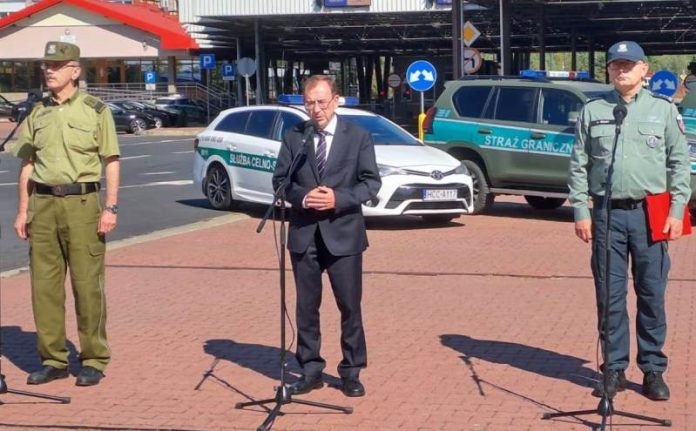Mariusz Kaminski, the Interior Minister of Poland, has declared that passenger cars registered in Russia will not be permitted to enter the country. The European Union has ruled that motor vehicles registered in the Russian Federation cannot enter the territory of its 27 member countries.
“Due to the publication on September 8 this year of the European Commission guidelines regarding the ban on the entry into the European Union of cars registered in Russia, I would like to inform you that this ban at the Polish border will be in force from tomorrow, i.e., from September 17, and will come into force today at midnight. This means that no passenger car registered in Russia will be able to enter the territory of Poland,” said Minister Mariusz Kamiński.
The head of the Ministry of Interior and Administration emphasised that this is another element of the sanctions imposed on Russia and its citizens in connection with the brutal war in Ukraine.
It is worth noting that the guidelines regarding the entry of passenger cars into the European Union are not new. Recently, the European Commission provided a clarification specifically addressing this matter. The Commission cites E.U. higher courts’ rulings on the application of sanctions as the reason for this clarification. Essentially, the E.U. prohibits the importation of Russian vehicles, even for personal use. Lithuania was the first country to implement these guidelines, followed by Latvia, Estonia, and Finland.
This joint effort may result in the isolation of Russia.
Poland’s eastern borders are shared with Belarus and Ukraine and the Russian exclave of Kaliningrad, which is separated from the Russian mainland.
Dmitry Medvedev, who serves as the deputy head of Russia’s Security Council under President Vladimir Putin and the Russian Foreign Ministry, criticised the European Commission’s recent actions. Medvedev went so far as to suggest that Moscow may respond by suspending diplomatic relations with the E.U. and recalling its diplomats from Brussels, labeling the actions as racist.
Electronic barrier on the Polish-Belarusian border
Poland also plans to build an electronic wall on the Bug River on the Polish-Belarusian border, adding to existing electronic barriers.
Minister Kamiński also announced that the Border Guard has announced a tender for constructing an electronic barrier on the Bug River along the border with Belarus. The announcement was published on Friday, September 15 this year.
“The electronic dam on the Bug River will enable us 100% monitoring the situation along the entire river on the border with Belarus. Our officers will have an excellent instrument to carry out their activities. I want to emphasise very strongly that we are not planning an engineering dam, i.e., a physical dam, on the Bug River, so as not to cut off our citizens from the river,” said the minister.
The minister also emphasised the critical role of the dam in protecting the Polish border.
“The electronic barrier and the excellent attitude of our officers guarantee to maintain the integrity and security at our border, including the water border. I am convinced that our security on the eastern border is the best in Europe because I know the situation on the borders of other countries. The external border of the European Union, which is also Poland’s border with Belarus and Russia, is the best secured border in Europe, and the most important guarantor of this are our officers and soldiers,” added Minister Kamiński.
The minister announced that work on constructing the electronic barrier around the Königsberg Oblast – Kaliningrad – would be completed in October and thanked the officers for their service.
Commander-in-Chief of the Border Guard, Maj. Gen. SG Tomasz Praga, who attended the event, said that the electronic barrier on the Bug border river would be an innovative solution. He emphasized that investments in the border structure increase the security of Poland’s borders.

